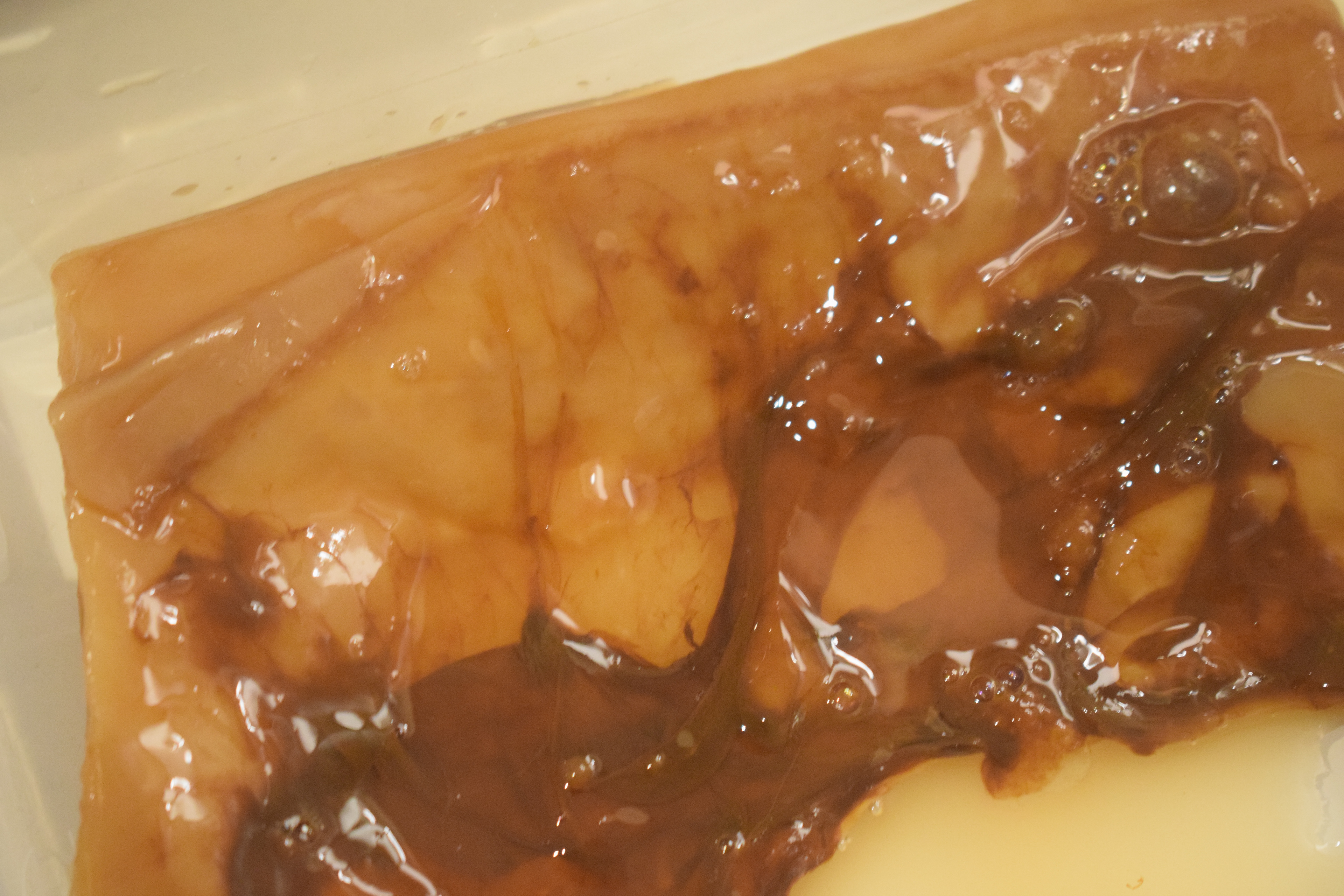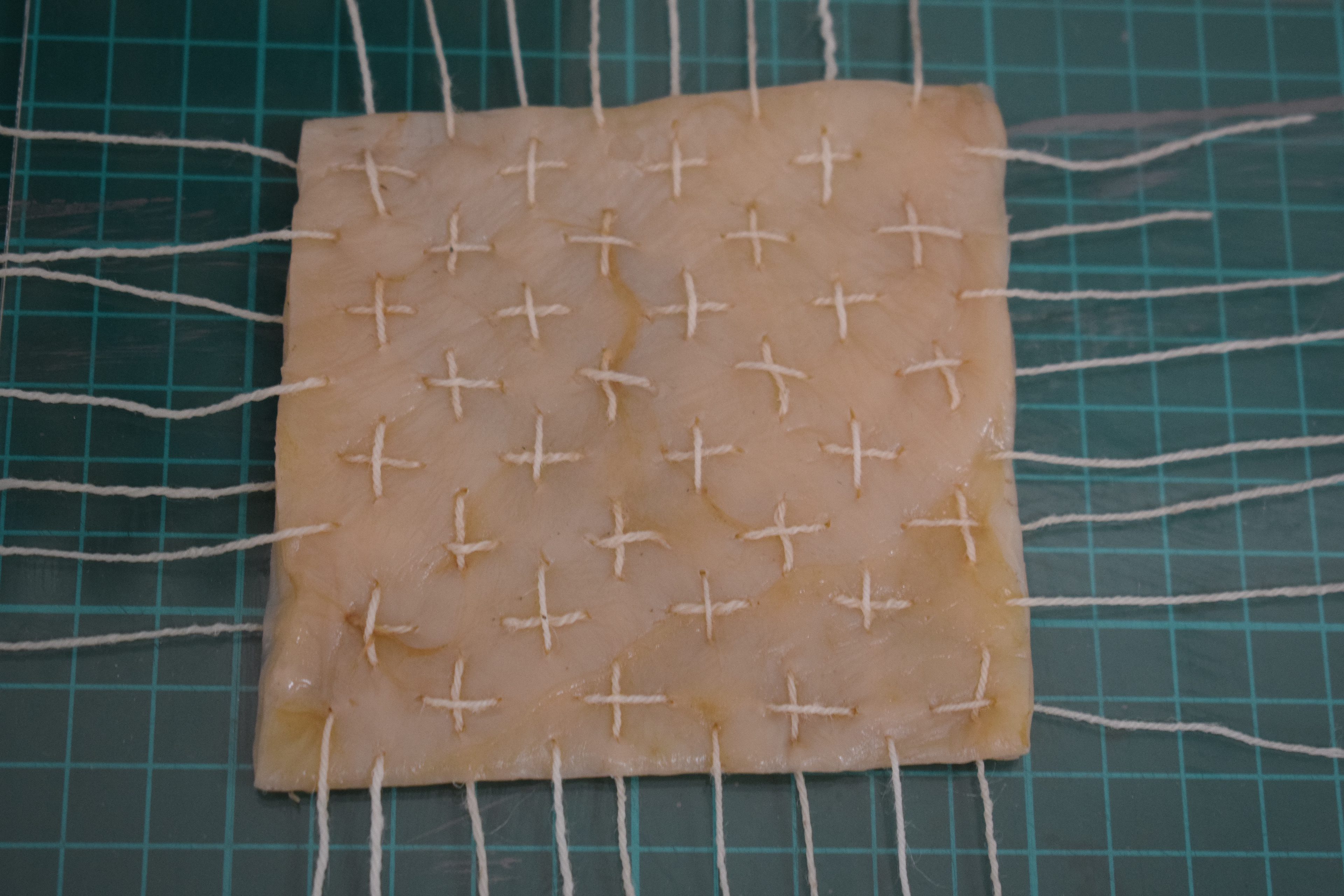
Crafting Cultures was a project with Fine Art & Architecture students from Newcastle University exploring biomaterial SCOBY through community crafting practices.
By initially engaging people from the Newcastle student community, we began to build a network of DIY bio-crafters who learned to grow, harvest, post-produce and craft their own innovative and sustainable biological materials using everyday domestic ingredients. The work was part of the Hub for Biotechnology in the Built Environment (HBBE), where a wide variety of PhD students and researchers were already working with BC, both within the lab and (over lockdown) at home. By working through crafting practices, we sought to recover material and artistic knowledge and skills that could compliment our research.
Crafting as a process offers a valid and important means to accumulate knowledge about and learn from materials. Over 3 months, we provided our student crafters with the skills and tools they needed to grow and develop their own practice with BC, both in the OME (an experimental building on-site at Newcastle) and at home. In doing so, we sought to bring our research to a new audience who worked us to collaboratively explore approaches in working with this material.
We furnished our crafters with the skills and resources to develop their practice of BioCrafting as a way to creatively and innovatively engage community groups through workshops in their chosen area of craft practice, and supported our BioCrafters to continue to develop their practice with external stakeholders. Not only is there immediate benefits to student crafters in terms of learning and experience with novel bio-materials, but this will add to the rich body of research around craft, making, and material and creative practice with bio-materials.
The work was supported by an Engagement and Place fund from Newcastle University, and Professor Ruth Morrow. Outcomes went on to be featured in exhibitions at Newcastle Contemporary Art and the OME, and as part of the Listen with Mother? and Birthing the Mother projects.







